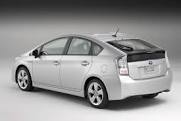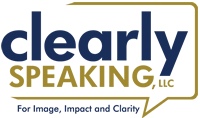High Efficiency Speech: SUV or Hybrid?
 Would your speech compare to an SUV (using a lot of words to convey your message) or more like a Hybrid (speaking more efficiently using fewer words)?
Would your speech compare to an SUV (using a lot of words to convey your message) or more like a Hybrid (speaking more efficiently using fewer words)?
In American business, we value conciseness. Communicating succinctly is an effective and powerful tool for persuading, convincing, or reinforcing messages. Speech that is too wordy is dull and boring and may leave the listener wondering what the point is. Similarly, a response that take 3-4 minutes to get to the point is too long to hold someone’s attention especially if the speaker veered from the main point in off-topic details. You or the speaker may have even forgotten what the question was after several minutes.
Distinguishing between the need to know and nice to know is a good skill to have because the brain stops processing information after awhile to prevent psychological burn-out. This skill can be developed in both structured, rehearsed presentations and in everyday spontaneous conversations. Using succinct, well thought out messages is a lot easier in presentations than in spontaneous conversation. But with determination and practice it can be achieved.
Here’s a plan to help you develop this skill:
1. Be clear in your mind about the point you want to make. Focusing on making just one point at first to minimize having to organize your thoughts for a number of points.
2. Don’t be afraid to pause before you respond. A delayed response appears thoughtful and in control.
3. Learn to summarize what you hear people saying or what is being asked. Reiterating what you hear being said not only increases your chances of understanding and responding on target but it also buys time to formulate a response.
4. Occasionally draw upon one of the following techniques to help you make a point in an interesting way:
Make an analogy.
Use a quote.
Tell a brief and relevant anecdote.
Define a word.
Use a statistic.
This technique requires preparation because no one can predict when a question will be asked that provides a good opportunity to use a quote to respond. It requires some thought about predicting questions and then having a perfect quote, analogy or anecdote that you can use to respond. Once you anticipate questions and then find appropriate techniques, practice the techniques out loud. When that moment arises in conversation for you to use your anecdote or quote, you will be ready and sound polished and articulate by spewing off a well-rehearsed story.
Begin by setting small goals of responding briefly (in one to two sentences) to summarize and make your point. Make your point in the first sentence of your response. Substantiate your point with more details only if asked for more. A good place to start is to think about how you respond when someone asks you what you do for a living. Is your response succinct and interesting? Does it leave the listener wanting to hear more about your job?
Practice your new way of speaking in specific situations, with certain individuals or while speaking on the phone. Make a conscious effort to speak more concisely at least twice a day. Highly efficient speech is like a hybrid car running on less gas and obtaining better mileage: use fewer words and achieve greater impact!
Tags: communication skills, concise speech, executive leaders speaking, how to speak better english, how to speak concisely
